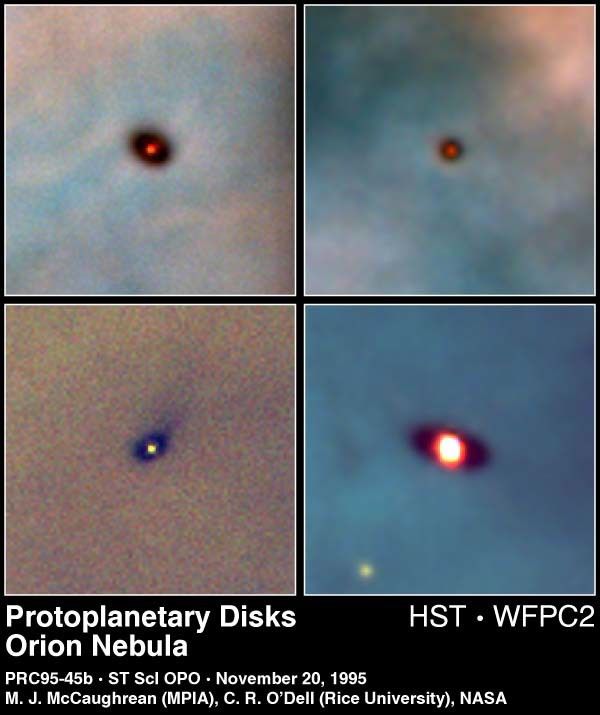Astronomers are releasing today one of the largest pictures ever taken of the heavens with NASA's Hubble Space Telescope - a spectacular color panorama of the center of the Orion nebula, a star forming region located 1,500 light- years away in the constellation of Orion the Hunter.
Also being released today are five new close-up images of dust disks that may be embryonic solar systems around newborn stars in Orion. They may be similar to the disk our own solar system probably formed out of 4.5 billion years ago.
This seamless mosaic was assembled from 15 separate Hubble views of the vast nebula. Hubble resolves details of starbirth as small as four billion miles across - roughly half the diameter of our solar system. Though the Orion panorama sweeps a big piece of celestial real estate 2.5 light-years across, the nebula is so far away that Hubble's mosaic covers an area of sky only about five percent of the area covered by the full Moon.
The image was taken by C. Robert O'Dell of Rice University, Houston, Texas, who used the Hubble Space Telescope between January 1994 and March 1995 to survey the nebula. Hubble observing time was devoted to making this panorama because the nebula is a vast laboratory for studying the processes which gave birth to our own Sun.
Using computer image processing, O'Dell and graduate student Shui Kwan Wong spent several weeks precisely combining 45 Hubble visible-light snapshots (taken at different colors of light to yield a natural, "full color" panorama) to create 15 fields which were then aligned and overlapped to create the final mosaic.
Scattered among the 500 stars in this sweeping photo mosaic, are several newly identified disks of dust encircling stars. Mark J. McCaughrean of the Max-Planck-Institute for Astronomy in Heidelberg, in collaboration with O'Dell, identified these dark disks silhouetted against the bright background of the Orion nebula.
Though the first direct visual evidence for circumstellar dust disks in Orion was uncovered by Hubble in 1992, the latest images show, unequivocally, that these are truly disks tilted at different angles to Earth. One striking image - resembling an interstellar Frisbee – shows a disk tilted edge-on, hiding the young star at its center. (A detailed study of the disk images by McCaughrean and O'Dell will appear in the March 1996 issue of the Astronomical Journal.)
In addition, the survey yeilds 153 disks that are glowing due to a torrent of ultraviolet radiation from the nebula's central stars. The existence of so many young stars with protoplanetary disks mathematically increases the likelihood of other planetary systems, said the researchers. "It means the building blocks are there; however, it doesn't mean that planets will certainly form," O'Dell said. As a young star evolves either its disk material "is drawn into planets or it dissipates with time." Current theory suggests that planetary systems form around stars about one million years after they ignite. "That's just about the age we're seeing here," O'Dell noted.
A description of O'Dell's earlier Orion nebula findings appears in the December 1995 issue of the National Geographic Magazine, along with a poster-size image of the Orion nebula.





































